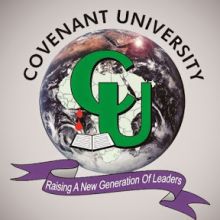About Hiroshima University
Although some of its constituent institutions date back to earlier times, Hiroshima University opened in its present form in 1949. This took place as part of a major reorganisation of Japanese education after the Second World War which saw the establishment of a single national university in almost all of the country’s 47 prefectures (or administrative divisions).
Notable pre-existing institutions include the Hiroshima Higher Normal School, set up in 1902, one of two national training centres for mid-school teachers; a university focussing on literature and science (1929); and a technical college (1920) which forged strong links with Japanese industry. Along with three other teacher training colleges which also became part of Hiroshima University, these institutions were severely damaged by the atom bomb dropped on the city in August 1945. It was precisely because the university was able to rise from the ashes of destruction that it adopted the phoenix as its symbol.
Hiroshima soon expanded its remit, adding both a medical school and postgraduate provision in 1953. This was followed in 1963 by what is now the Research Institute for Radiation Biology and Medicine, designed to study the impact of nuclear radiation and to develop practical measures for improving the lives of the tens of thousands of survivors of the bomb blast. Other research centres are devoted to fields ranging from early childhood education and peace science to regional geography and marine biology.
Like many other universities across the world, Hiroshima experienced student unrest in the 1960s. This led to a number of reforms. One of the most significant was bringing together virtually all the faculties on a single campus at Higashi-Hiroshima City. It is now widely recognized as one of the nation’s most prestigious and broadly based universities.
Explore these featured universities
Explore rankings data for Hiroshima University
Compare universities on their key stats
Key statistics
- 38 : 62Student Ratio of Females to Males(1)
- 11%Percentage of International Students(1)
- 14,775Number of FTE Students(1)
- 8.1No. of students per staff(1)
- 24%Proportion of ISR Publications(1)
- ¥3,242Finance per Student (¥000s)(2)
Subjects taught at Hiroshima University
Engineering & technology
- Civil Engineering
- Electrical & Electronic Engineering
- Mechanical & Aerospace Engineering
- General Engineering
- Chemical Engineering
Social sciences
- Sociology
- Geography
- Communication & Media Studies
- Politics & International Studies (incl Development Studies)
Arts & humanities
- Architecture
- Archaeology
- Art, Performing Arts & Design
- Languages, Literature & Linguistics
- History, Philosophy & Theology
Psychology
- Psychology
Business & economics
- Accounting & Finance
- Business & Management
- Economics & Econometrics
Physical sciences
- Mathematics & Statistics
- Physics & Astronomy
- Geology, Environmental, Earth & Marine Sciences
- Chemistry
Life sciences
- Biological Sciences
- Veterinary Science
- Sport Science
- Agriculture & Forestry
Law
- Law
Clinical, pre-clinical & health
- Other Health
- Medicine & Dentistry
Computer science
- Computer Science
Education
- Education






